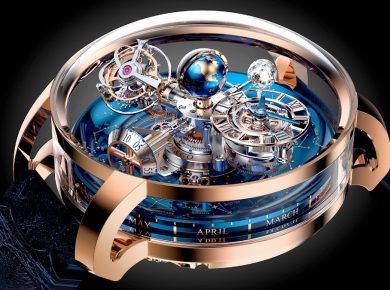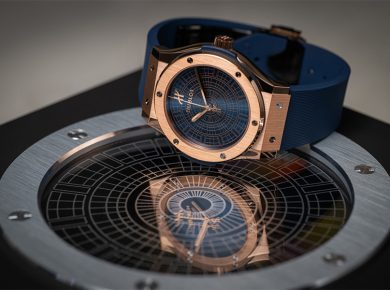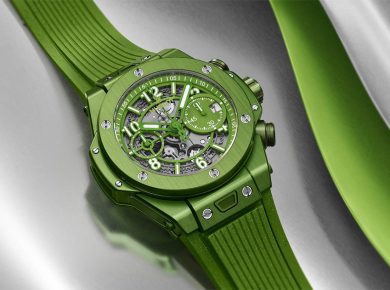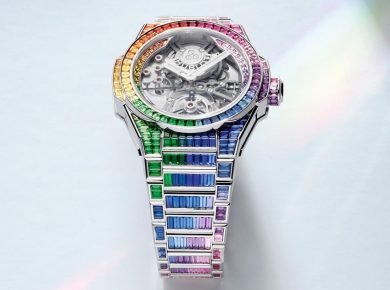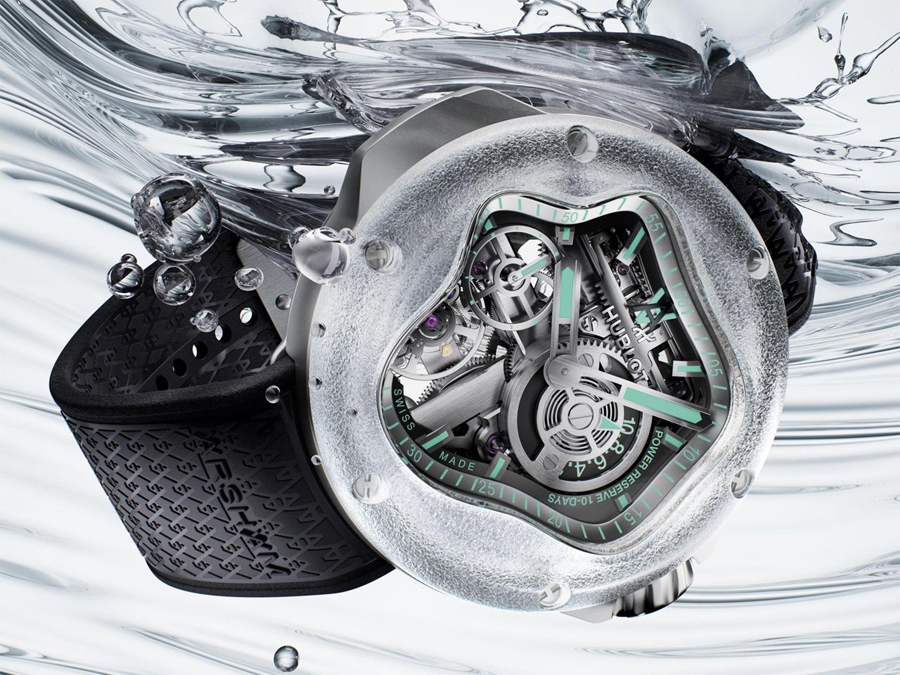
In the 19th century, pocket watches were more than just instruments of timekeeping. They were emblems of refinement, intimate possessions that spoke of taste, craftsmanship, and status. As wristwatches rose in the 20th century, the pocket watch quietly faded from everyday use, left behind as a relic of gentler times. Yet, in recent years, that old-world charm has started to return – not as nostalgia, but as reinvention. The rebirth of the pocket watch’s spirit began anew with the MP-16 Arsham Droplet, a collaboration between famous watch brand Hublot and artist Daniel Arsham. That creation was not merely a device but a dialogue between art and horology, embodying the fluid tension between past and future. Its success was almost inevitable. It wasn’t about telling the time. It was about capturing it.


Now, that vision evolves. The Droplet has found its heir, transformed into a wearable form that carries forward its fluid philosophy. The new Hublot MP-17 MECA-10 Arsham Splash Titanium Sapphire takes the conceptual grace of the pocket watch and molds it into something meant to live on the wrist. Hublot calls it the “fluid evolution of artistic horology,” and for once, the marketing language feels justified. It’s a sculpture first, a timepiece second, and somehow both at once.

Daniel Arsham’s collaboration with Hublot has always occupied that strange, compelling intersection between fine mechanics and contemporary art. His aesthetic is rooted in “fictional archaeology” – the idea that objects from our present might one day be unearthed like ancient artifacts. The MP-17 plays directly into that vision. It looks like a relic from the future, something preserved in ice, frozen mid-splash, and rediscovered centuries later. Its titanium body curves like liquid metal. Its frosted sapphire crystal glows like polished ice. The whole watch feels alive, as though time itself were suspended inside it.


The design is deeply layered. The open-worked dial, with its splash motif, appears almost to ripple beneath the sapphire shell. Hublot’s signature H-screws remain, anchoring the transparent structure, but they feel less industrial here – more ornamental, part of the composition rather than a technical necessity. The hands are peculiar in proportion, the minute hand stretching to the edge of the dial as though pushing against the limits of its transparent cage. Even in stillness, the MP-17 conveys motion, like the captured instant when water meets air.

Powering this kinetic illusion is Hublot’s in-house Meca-10 movement, the HUB1205 – a compact manual-winding caliber known for its extraordinary ten-day power reserve. It beats at 3 Hz, displaying its heartbeat through bridges of grey-treated metal, visible both from the dial and through the sapphire caseback. The mechanical layout is symmetrical yet raw, mechanical yet poetic. The linear power reserve indicator, sliding across the movement like a ruler of endurance, adds a modern sense of functionality to the sculpture’s depth. The case measures 42 millimeters in diameter and 15.35 millimeters thick, giving the watch a solid, architectural presence. It is water resistant to 50 meters, though few would dare submerge something so deliberately crafted to look like flowing water.

The combination of titanium, sapphire, and rubber elements defines Hublot’s mastery of material fusion, but here the technical achievement seems secondary to the visual story. Every surface – brushed, frosted, or polished – reflects light differently, like ripples across the surface of a stream. Arsham’s signature shade of green appears in subtle luminous accents on the hands and markers, breathing color into the monochrome palette without overwhelming it. The watch doesn’t scream luxury. It whispers it through form, texture, and restraint.

Limited to just 99 pieces and priced at $69,000, the MP-17 is not about exclusivity for its own sake. It’s about alignment – between creator and collector, between art and engineering, between water and time. Daniel Arsham once said that his work collapses time, leaving you unsure whether you’re looking at an artifact from the past or an echo from the future. This watch does precisely that. It feels ancient and futuristic in the same breath, something both timeless and transient.


The resurgence of interest in pocket watches isn’t about reviving the past. It’s about rediscovering a sense of ritual and intimacy in how we perceive time. The MP-17 doesn’t mimic its predecessor; it evolves it. It’s the moment when art and horology blur so completely that distinction becomes irrelevant. For those who wear it, it’s not a tool, nor even a symbol. It’s an experience – an embodiment of motion, history, and imagination captured in a single, suspended drop.




